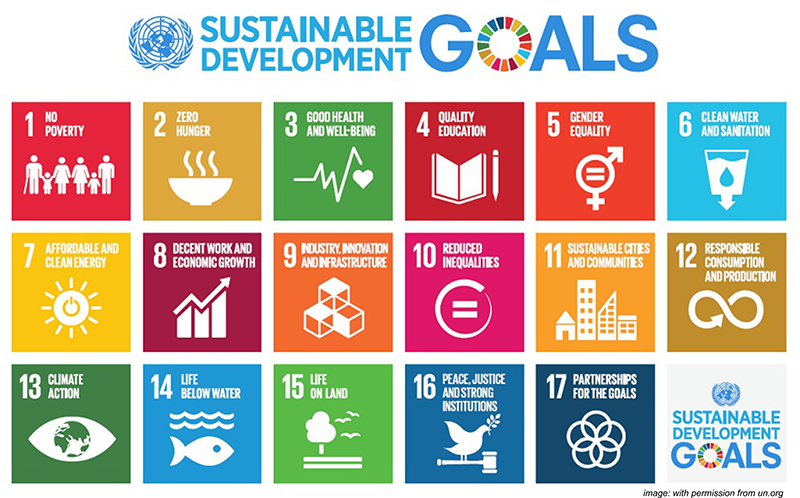This year, the theme for International Day of Forests is Forests and Sustainable Cities, an extremely timely and important topic. With the Paris Agreement and Sustainable Development Goals, recognition of the global importance of forests is at an all-time high. A deeper understanding of the ecosystem benefits provided by forests and trees in urban areas will certainly help sustain this new global momentum and lead to a greater appreciation of the role forests play in the battle against climate change.
Just as they do in other forests, urban forests store carbon, improve local climates, cool city air, remove harmful pollutants and provide renewable energy sources for cooking and heating. At the same time, trees filter and regulate water supplies, while providing habitats and food for many animals. Urban forests also help raise awareness of the value of forests among city dwellers, and their behaviour is crucial given that more than 50 percent of the global population is urban.

Facing a global reality
The reality is that keeping the rise of global temperatures below 2°C will require a 50 percent reduction in global emissions by 2050. This reduction will be impossible without halting deforestation. Forests and trees can actually provide up to 30 percent of the action needed to keep global warming below 2°C.
Just as forests store carbon in cities around the world, carbon sequestration in forests is critical in the battle against climate change. If we are to meet global climate goals, the world will have to reduce emissions from deforestation to zero over the next decade. This includes preserving urban forests as well as halting deforestation.
The good news is that this ambitious goal is actually realistic for three important reasons. For the first time ever, we have a positive alignment of the three key factors needed for transformative change: political momentum, technical know-how and finance sources.
Political momentum
The momentum has been building since the Paris Agreement and Sustainable Development Goals were adopted – both significant and recent game changers. The Paris Agreement sends a strong message that forests are a critical element in achieving net-zero emissions by the second half of this century, and it calls on countries to reduce emissions from deforestation and forest degradation. The United Nations Sustainable Development Goals are a universal 'call to action' to end poverty, protect the planet and ensure people enjoy peace and prosperity by 2030. Among the 17 global goals are those that stress the fundamental importance of forest ecosystems and the stabilisation of the climate system for human well-being. Together, these represent a formal recognition of the political importance of forest preservation in many countries around the world.

Technical know-how
There is an unprecedented level of technical know-how to deliver sustainable land use management, sustainable forest management and forest conservation. After many years of experience, we now know how to do this in a way that improves people’s livelihoods, promotes equity and good governance.
Finance sources
With an unprecedented level of financing for sustainable land use and forest management, governments have invested at levels never seen before. Germany, Norway and the UK, for example, have jointly pledged 5 billion dollars. Realising that zero deforestation is good for business, we are also starting to see the private sector stepping up with their own ground-breaking financing commitments.
With these three elements now in place, the next step is to take these commitments and transform them into concrete action on the ground. But we need to see action at a scale, pace and magnitude that we have never seen before. How do we achieve this? The key lies in scaling up and strengthening partnerships across sectors, between governments, international organizations and the whole spectrum of stakeholders.
Ten years of partnership
The UN-REDD Programme is an example of what can be achieved when partnerships and collaboration drive change. Over the past ten years, we have developed tools, resources and a global network of expertise through the partnerships of FAO, UNDP and UN Environment, with forested countries, donors, indigenous peoples and civil society. It is precisely because of this unique collaboration that we have been able to respond with tailored solutions to support more than 60 countries through REDD+ readiness and implementation.
At the UN-REDD Programme, we believe that forests are fundamental not just for the well-being of cities and their inhabitants, but also for the future of our planet, our livelihoods, sustainable development and the global economy. And most importantly, for the global climate change battle.
The way forward
The power of partnerships is also a key element of the UN reform process that has been spearheaded by UN Secretary-General António Guterres. We are hopeful that the UN Climate Summit in 2019 will demonstrate the real success of collaborative approaches in responding to one of the greatest global challenges faced by humanity today. As the UN Secretary-General has said, we live in a complex world. We cannot succeed alone. Partnership must continue to be at the heart of our strategy.
By strengthening collaboration across policy divides, between sectors and in a true spirit of common cause, we can ensure that forests will continue to provide the benefits that our climate system and all human livelihoods depend on, not just in cities, but everywhere around the globe.



